Your website is not an island.
While creating top-quality content is important, your website’s relationship with every other site in the vast sea of the internet is just as vital. You won’t get very far if no one is linking to your pages, and you can’t expect many people to do so without some effort on your part.
While you can’t force people to link to your content, you can take some simple steps to encourage other sites to send visitors your way.
All it takes to generate quality links is a little careful planning and a few proven techniques.
In this post, we’ll talk about why you need a fully developed link-building strategy. Then, we’ll explore how to create one using 12 proven strategies.
Let’s get going!
What Is A Backlink?
A backlink is an inbound link from another website to yours.
Backlink
A backlink is simply a link from one website (back) to another. If site owner A links to site owner B’s content, B has a backlink from A. Conversely, if site owner B links to site owner A’s content, A will have a backlink from B.
Read MoreThe internet is filled with links. Your site probably has lots of them: internal links, which go between different pages within your own site, and outbound links, which go from your site to external websites owned by other people.
Basically, a backlink is like a vote of confidence or a signal of content relevance and quality to search engines.
In other words, backlinks are just as important as the links you include on your own site because:
- Links to your site improve your visibility, helping to familiarize people with your brand
- They also bring new visitors to your website, including those you might not have had an easy way to reach otherwise
- Google and other search engines view backlinks as a positive symbol — they indicate that others find your content useful and worth linking to. Therefore, having plenty of quality links to your site (from relevant websites with high domain authority) can improve your search engine rankings
Backlinks come in two standard flavors:
- Dofollow backlinks are the standard type of hyperlink that passes on “link juice” or SEO value from one site to another. They are a powerful tool for improving a website’s search engine ranking, as they indicate to search engines that another website endorses your content
- Nofollow backlinks, on the other hand, include an HTML attribute that tells search engines to ignore the link in terms of passing on SEO value. Introduced to combat spam and over-optimization, Nofollow links are commonly used in comment sections of websites, sponsored posts, or other places where links might not be organically placed. While they don’t contribute directly to a website’s search ranking in the same way Dofollow links do, they can still bring traffic to your site and assist in building brand awareness
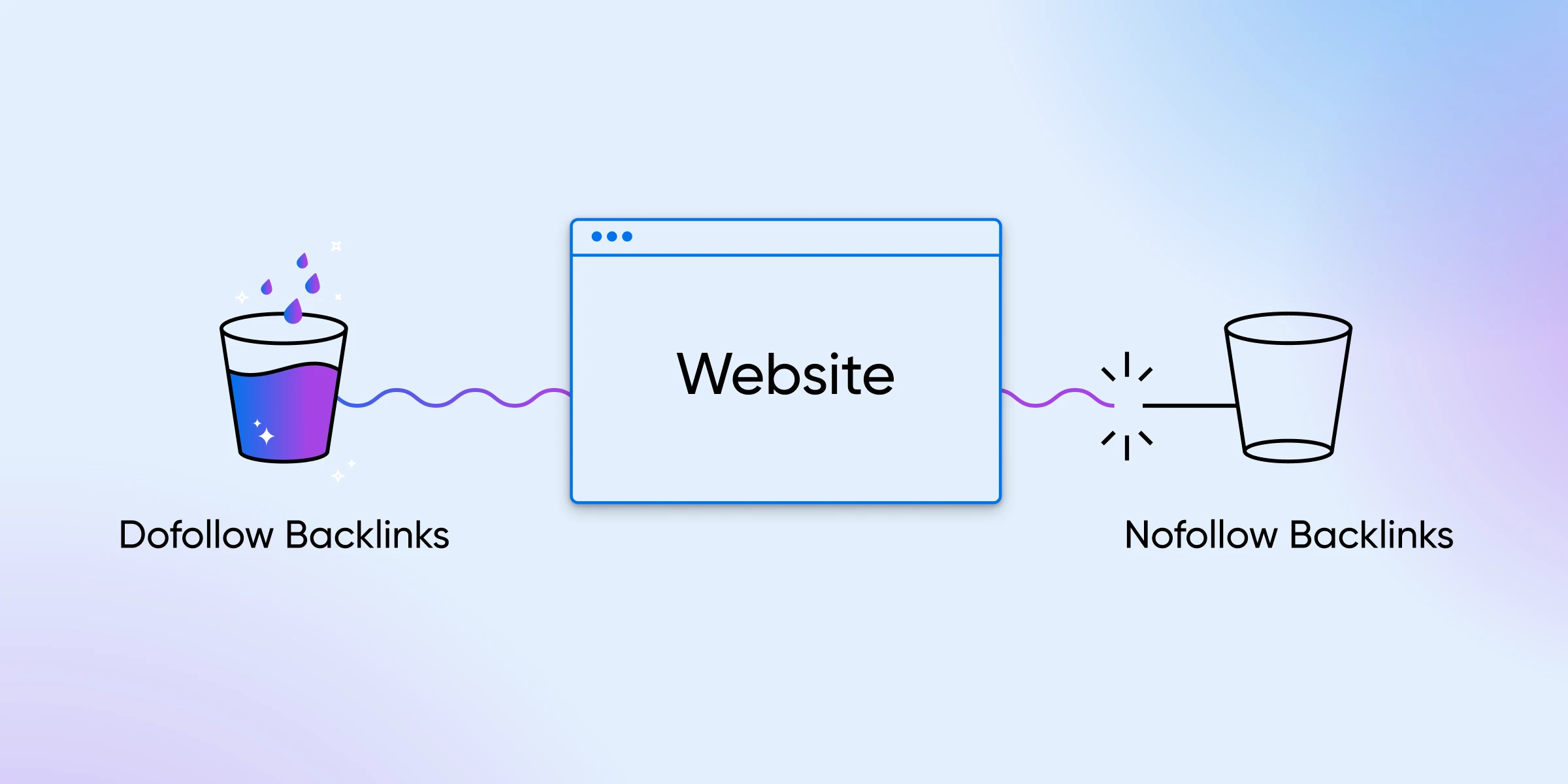
There’s no doubt that the more people are linking to your site, the better. Having lots of backlinks essentially tells Google (and potential customers) that you have a trustworthy and reputable website.
However, there is one big problem when it comes to backlinks — you rarely control them. This means you’ll need to engage in some link building or take steps to increase the number of backlinks pointing your way.
What Is Link Building?
Typically, your website will have a lot of links. Internal links point toward other pages on your own website, while external links point away from your site to other web pages. Having plenty of both is vital for your site’s User Experience (UX) and Search Engine Optimization (SEO).
Link building is the strategic process of acquiring hyperlinks from other websites to your own. It’s a cornerstone of SEO strategies because links are a major signal to search engines that your site is a valuable resource — one that’s worthy of citation. Essentially, each backlink you earn is seen as a vote of confidence from one site to another, like a +1 for the quality and relevance of your content.
The goal of link building is to increase the number of high-quality backlinks pointing to your pages, which, in turn, improves your site’s rankings in search engine results pages (SERPs). This process often involves a mix of strategies and tactics you can use to convince other website owners it would benefit them and their website to link to your content.
It’s important to note that effective link building is not about manipulating search engine algorithms. Instead, you should focus on creating compelling reasons for others to cite your website as a source of quality information or entertainment.
This can be achieved in many different ways: producing truly share-worthy content, establishing trusted partnerships, or participating in the online community in a way that naturally leads to your site being linked.
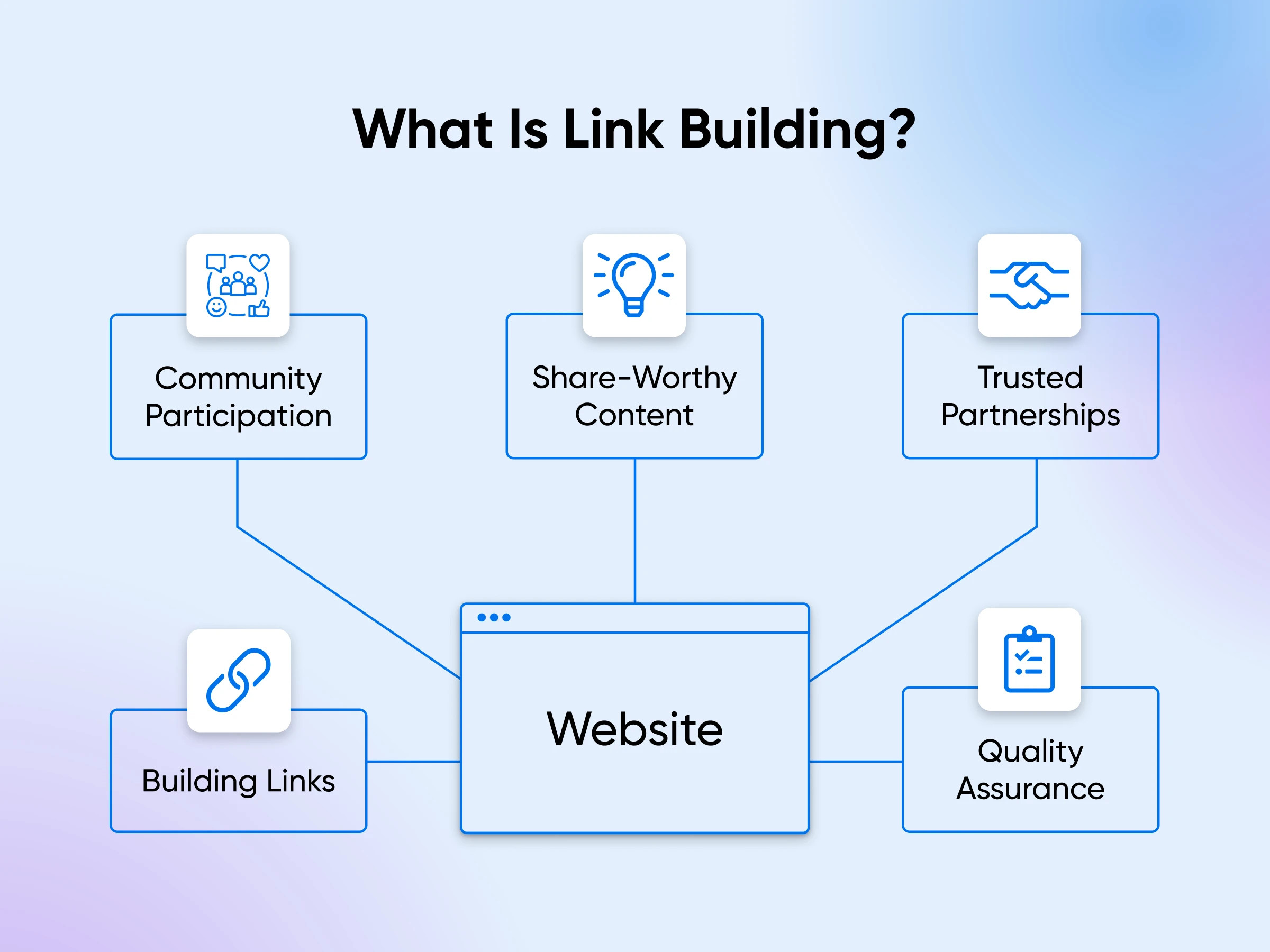
Beyond SEO, backlinks can also drive a significant amount of direct traffic to your site and help enhance your online reputation. They are a signal to both search engines and users that your site is a credible and authoritative source in your niche, which can help you establish your brand, grow your business, and more.
What Is a Link Building Strategy?
There’s a lot of content for people to link to and they may not even know about yours. So you’re most likely to succeed at link building if you can put together a comprehensive, well-thought-out link building strategy.
A link building strategy is a carefully crafted plan designed to increase the number of high-quality backlinks pointing to your website, thereby improving its visibility and ranking in the SERPs. This involves identifying objectives, setting goals, targeting relevant audiences, and selecting the most effective strategies and techniques to get other websites to link to your content. Your strategy won’t be a one-size-fits-all; it must be tailored to the specific goals, audience, and industry.
At its core, a link building strategy looks for opportunities to create links that enhance your site’s perceived value and authority in the eyes of both search engines and other internet users. It requires a deep understanding of your own content, as well as the landscape of the web in your niche.
Your strategy might involve creating unique, high-quality content that naturally attracts links, or reaching out to other site owners to ask to write a guest blog for them.
A successful link building strategy hinges on the quality of the backlinks rather than the quantity.
Search engines, particularly Google, have gotten better and better at identifying and penalizing sites that try to manipulate their search engine rankings by acquiring low-quality or spammy backlinks. As such, you should focus on ethical and sustainable link building practices, which prioritize creating genuine, valuable connections between websites.
Implementing a link building strategy typically involves multiple steps, and we’ll cover those in more detail later in this article. First, though, we want to talk about some of the biggest dos and don’ts of link building.
The Dos And Don’ts Of Link Building
In a moment, we’ll walk you through the process of putting together your link building strategy and successfully executing it. First, however, it’s important to cover some basics.
For example, there are things you’ll want to avoid (like the plague) while conducting your link building efforts. These include:
- Paying people to include your links on their sites: Buying backlinks is generally considered unethical, and if Google finds out you’re doing it, you’ll be penalized severely.
- Misleading people about your links to get them featured: This is likely to backfire. If people click on a link leading to your site but find out that your content isn’t relevant to them, they’re just going to leave.
- Spamming other people’s sites with your links manually: It can be tempting to add links to your site’s content to as many other websites as possible. However, doing this too much can harm your credibility and get a lot of your links reported as link spam.
- Using link directories, link farms, and link exchange schemes: These are shady techniques developed to get a lot of links into the public quickly — like the above methods, they can backfire and get Google’s attention (and not in a good way).
- “Black hat” link building techniques: This mostly means trying to get “hidden” links on pages by cloaking them, making them hard to see, or even hacking directly into other sites. Pretty gross, right?
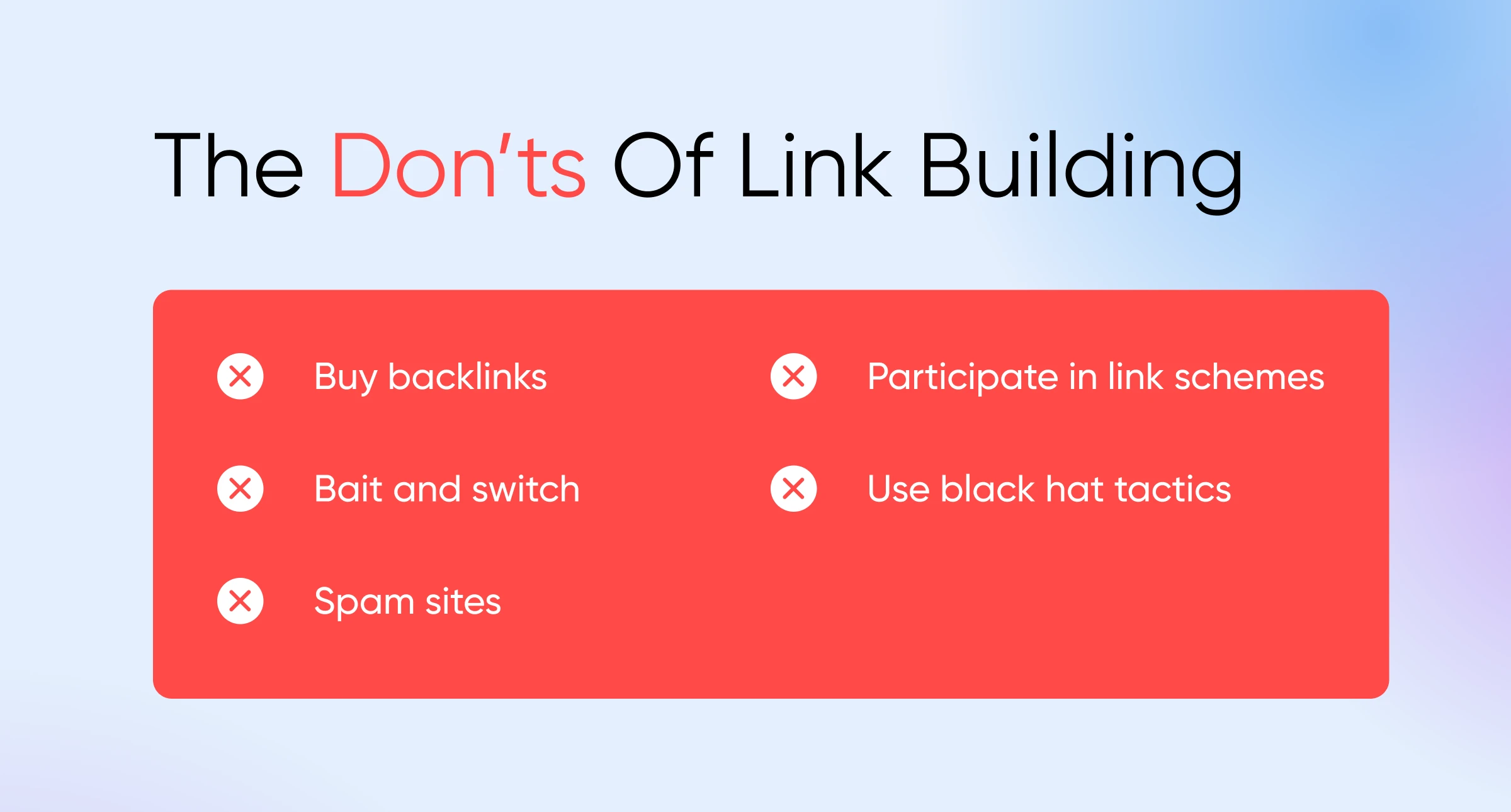
Some of these are obviously bad ideas, while others (such as link exchanges) might initially seem smart until you learn more about them. None are worth the risks involved.
So what should you do? Let’s lay the groundwork with these link building “dos”:
- Encourage links from high-quality and high-ranking sites: The quality of your backlinks matters just as much to Google as the quantity. So wherever possible, you want to try and get backlinks from sites that are trustworthy, well-maintained, and visible.
- Focus on relevant websites: You want to encourage new visitors likely to be interested in what your site has to offer. Backlinks on sites relevant to their needs are much more valuable than backlinks from random pages.
- Reach out: You don’t have to simply hope for backlinks, you can ask for them directly, and there are several effective (and non-intrusive) ways to do so.
- Use a variety of techniques: One link building method may not get you too far, but a combination of three or four smart techniques can make a big difference.
- Create awesome content: Your content marketing matters! The truth is the better your content, the more likely people are to link to it, whether as a result of your efforts or simply stumbling across it. The ultimate rule of thumb: If you create link-worthy content, high-quality, relevant links will come to you — not the other way around.
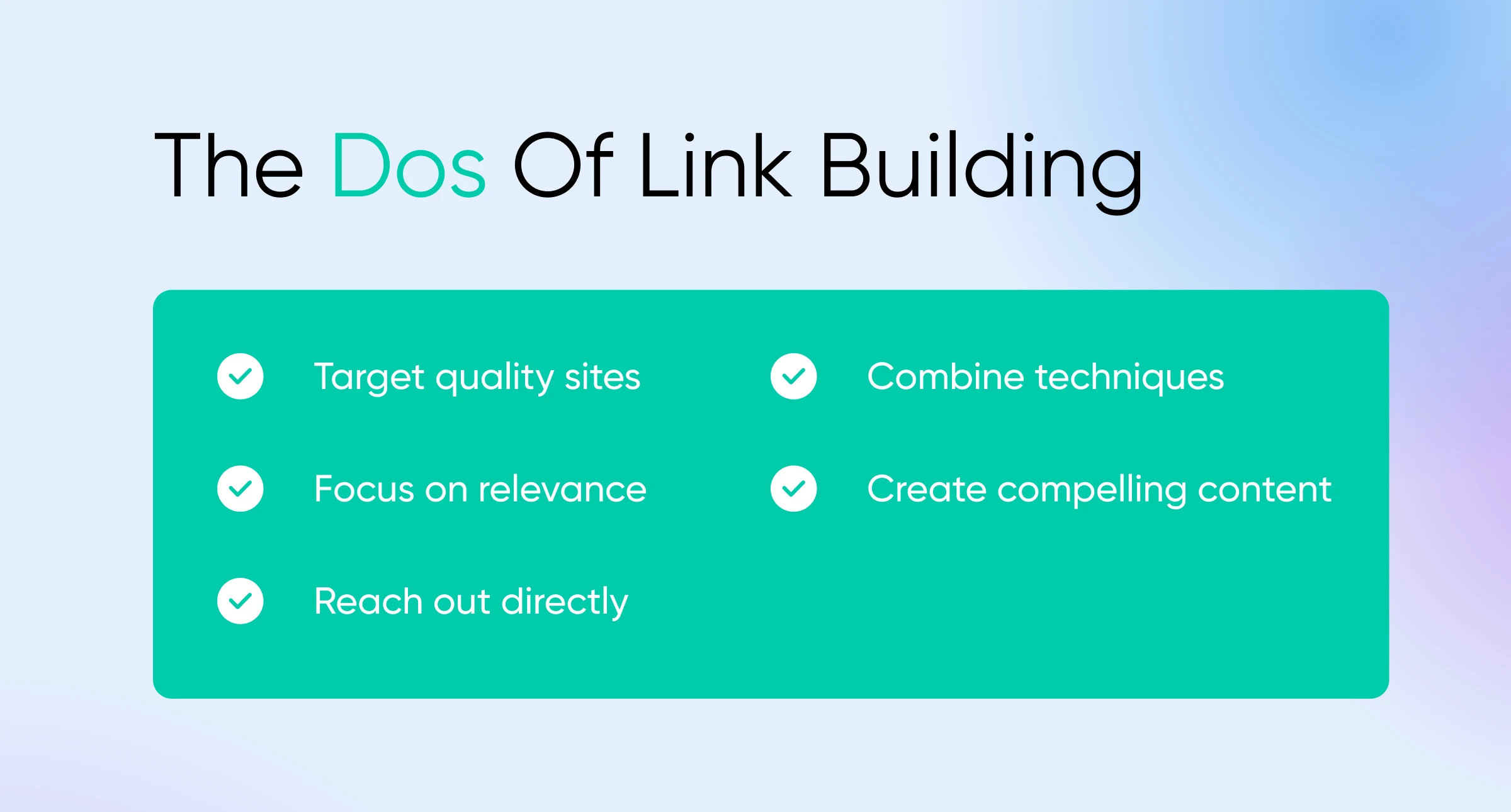
At this point, you’re probably wondering how to put all of this into practice. Without further ado, let’s jump into the practical portion of link building 101.
How To Get Backlinks For Your Site
Like any way of promoting your website, there is no “one right way” to do link building. Likewise, there’s no golden ticket that will get you a hundred backlinks by next Thursday (if there were, promise we’d tell you).
However, you can take some basic steps that will greatly improve your chances of successfully increasing backlinks. We recommend starting with the following 12 strategies. You can pick and choose a few link building tactics to try, and mold them as needed to fit your unique needs.
1. Take A Close Look At Your Target Audience
A lot of successful link building comes down to pursuing backlinks in relevant places. This means you have to be very familiar with your target audience. If you don’t know what they care about and where they hang out, you can’t encourage links they’re likely to see.
If you haven’t done so already, this is a perfect time to put together a target audience profile. That’s a detailed description of the visitors you’d like to attract to your website. You’ll want to research them carefully and collect information on their demographics, behaviors, interests, needs, and so on.
When it comes to link building, you’ll want to pay particular attention to where your target audience spends their time online. What sites do they visit and which social media platforms do they prefer? These are the places you’ll benefit most from including in your link building strategy.
This is also a good point to research your competitors’ backlink strategy.
If you can, find out what kinds of sites link to your top competitors. It’s also useful to know what online places and communities your competitors are ignoring, as those likely have audiences hungry for the quality content you’re offering. Those are backlink opportunities you don’t want to miss!
2. Audit And Update Your Existing Content
Next up, it’s time to think like a content marketer. You can’t encourage links to your site unless you know what you want people to link to. Generally, you’ll want to focus on specific content, rather than simply your home page (which can appear more spammy and less authentic).
So this is a great time to conduct a thorough audit of your site’s existing content. While doing this, you can:
- Look for top-quality pages and posts (or even product pages) that you think other sites would want to link to: Add these to a list as you go, so you know what represents your best content.
- Find any content that could be great but needs a little improvement: With a few tweaks, so-so articles can become a target for a quality backlink. This means ensuring that they’re up-to-date (for example, make sure you don’t have a broken link in the text and that stats are still accurate), match your brand’s style guide, and provide value to your audience.
- Search for “gaps” you can create new content to fill: There may be information or topics that you think other sites would be happy to link to, but you haven’t written about yet. You can follow our guide to writing a blog post to get started.
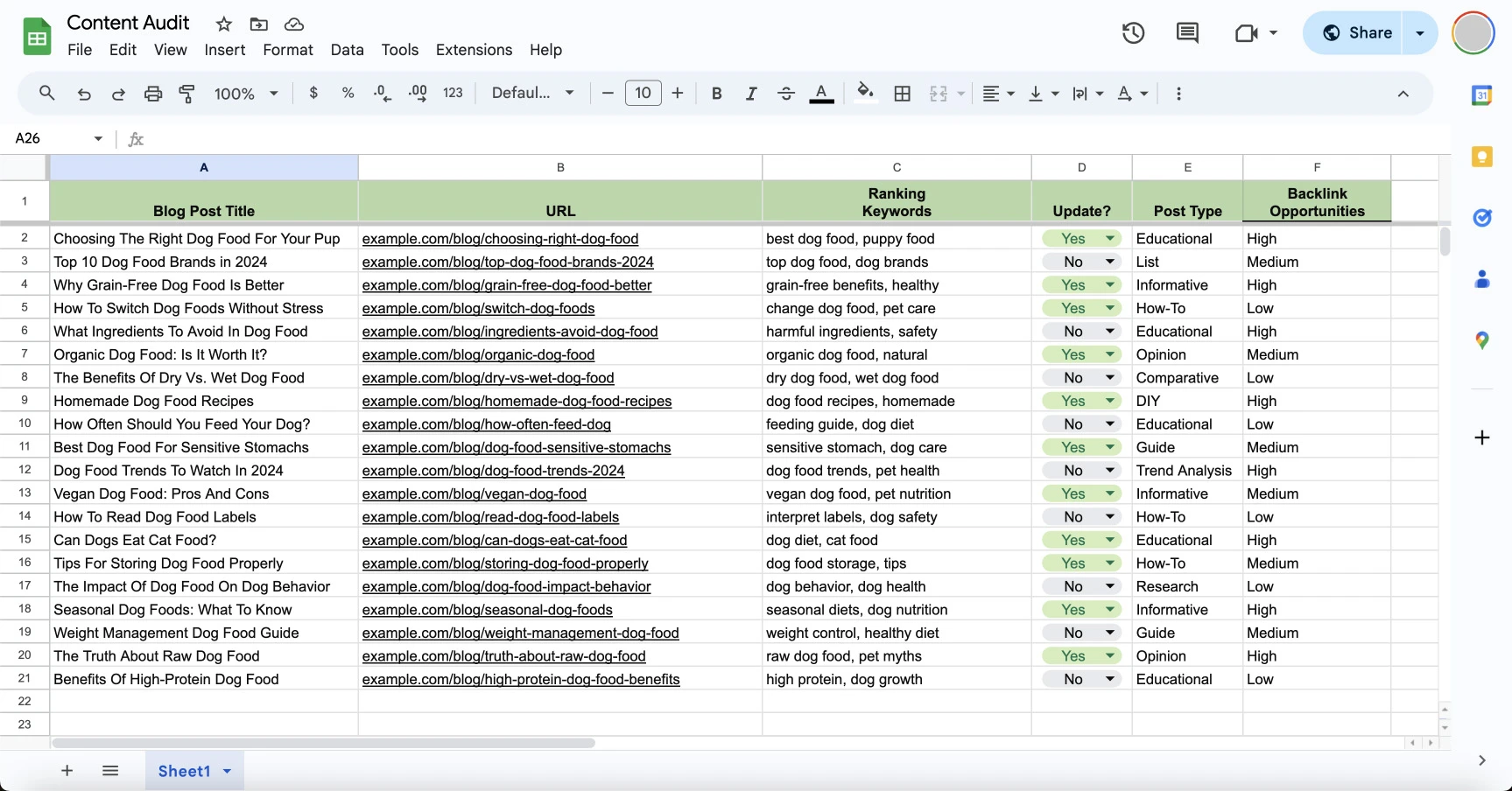
After auditing your content, the next natural step is to start improving and expanding it. Having lots of high-quality content makes link-building a lot easier.
It’s also worth noting that if you don’t have a blog on your website yet, now is the time to start one! There are few things better than a blog for generating lots of new, timely content that people will want to share with their audiences.
3. Do A Link Gap Analysis
After auditing your content, it’s a good idea to audit your backlinks. Performing a link gap analysis is a great way to understand where your website stands in comparison to its competitors in terms of backlink profiles. This analysis helps identify the “gap” between the number and quality of backlinks your site has versus those of your main competitors.
Understanding this gap is the first step. Next, you can strategically target your link building efforts to close it, improving your site’s authority and search engine rankings.
Here’s how to do a link gap analysis, step-by-step:
- Identify your main competitors: Start by listing out your main competitors. These can be sites that rank well for keywords you’re targeting or operate within the same industry niche and attract a similar audience.
- Use an SEO tool to analyze backlink profiles: There are several keyword research tools available online, such as Ahrefs, Semrush, and Moz. Use these tools to analyze the backlink profiles of your own site and those of your competitors. Make a list of backlinks, then look at the quality of these links, the diversity of linking domains, and whether any of them are particularly authoritative backlinks.
- Identify gaps in your backlink profile: Compare your backlink profile with those of your competitors to identify any gaps. Pay special attention to the quality and relevance of the backlinks, as these are more important than just quantity. Look for patterns in the types of content that are earning links for your competitors but not for you.
- Analyze opportunities: Based on your findings, identify opportunities for your own link building strategy. Maybe you can target specific websites or types of content that are currently linking to your competitors but not to you, create content that fills your backlink gaps, or reach out to high-quality domains and ask them to link to your site.
- Create a plan: With your analysis complete, develop a targeted action plan to acquire new backlinks. This plan should prioritize high-quality, relevant links that will close the gap between your site and your competitors.
4. Consider What Link Building You Can Perform Yourself
As we mentioned earlier, most of link building involves getting other people to link to your site of their own volition. However, there’s some link building you can do on your own, without venturing into spammy territory.
And who doesn’t love a little DIY?
The first and most important part of this step is internal linking. You need to make sure all of your online presences are connected. This means your social media accounts should point to your site (and vice versa), and if you have more than one website, they should be interlinked as well.
You can also include some links to your content on other people’s websites, particularly in forums and comment sections. But be careful — don’t create too many of these links, and make sure they’re always highly relevant.
Your best approach is to find sites and communities where your target audience is present and engage genuinely with them. When organic link building opportunities come up and you can share a helpful link, don’t be afraid to do so. While these links are not considered as valuable by Google as a natural link created by someone not affiliated with your site, they still have an impact.
5. Start Conducting Outreach
At this point, you’ve done a little link building of your own. You’ve also improved your site’s content marketing efforts, which will hopefully generate more links for you organically (as people stumble across and share your pages and awesome articles).
However, the best way to build links is to ask for them.
Yep, you can reach out to a website and simply ask them to link to your content. This is a common practice and can be very successful when approached carefully. It can even help create the foundation for mutually beneficial relationships between you and other relevant sites.
So, what does successful outreach look like?
Everyone’s strategy is a little different, but the following tips and techniques are key:
- Reach out to highly relevant sites: This is where all your research will come in handy. Sites that see your content and audience as relevant to them are more likely to welcome your request, rather than see it as intrusive.
- Offer specific content they can link to: It’s not usually effective to just email blogs and write, “Link to my website, pretty please?” Instead, use the results of your content audit to identify specific pages and posts you’d like to share and request links to them specifically.
- Share genuinely useful content: A link building request is obviously self-serving, but it doesn’t have to be all about you. Do some research on the site you’re reaching out to and find something you think would really be interesting or useful to its audience. Blog posts, tutorials, infographics, and videos are all great options.
- Suggest specific places your links could be included: This shows that you’ve done your research and makes accepting the request easier on the target site. You can propose new links where none currently exist or even offer a better piece of content as a replacement for an existing link. Don’t forget to offer up some anchor text to make it even easier for the other site’s admin!
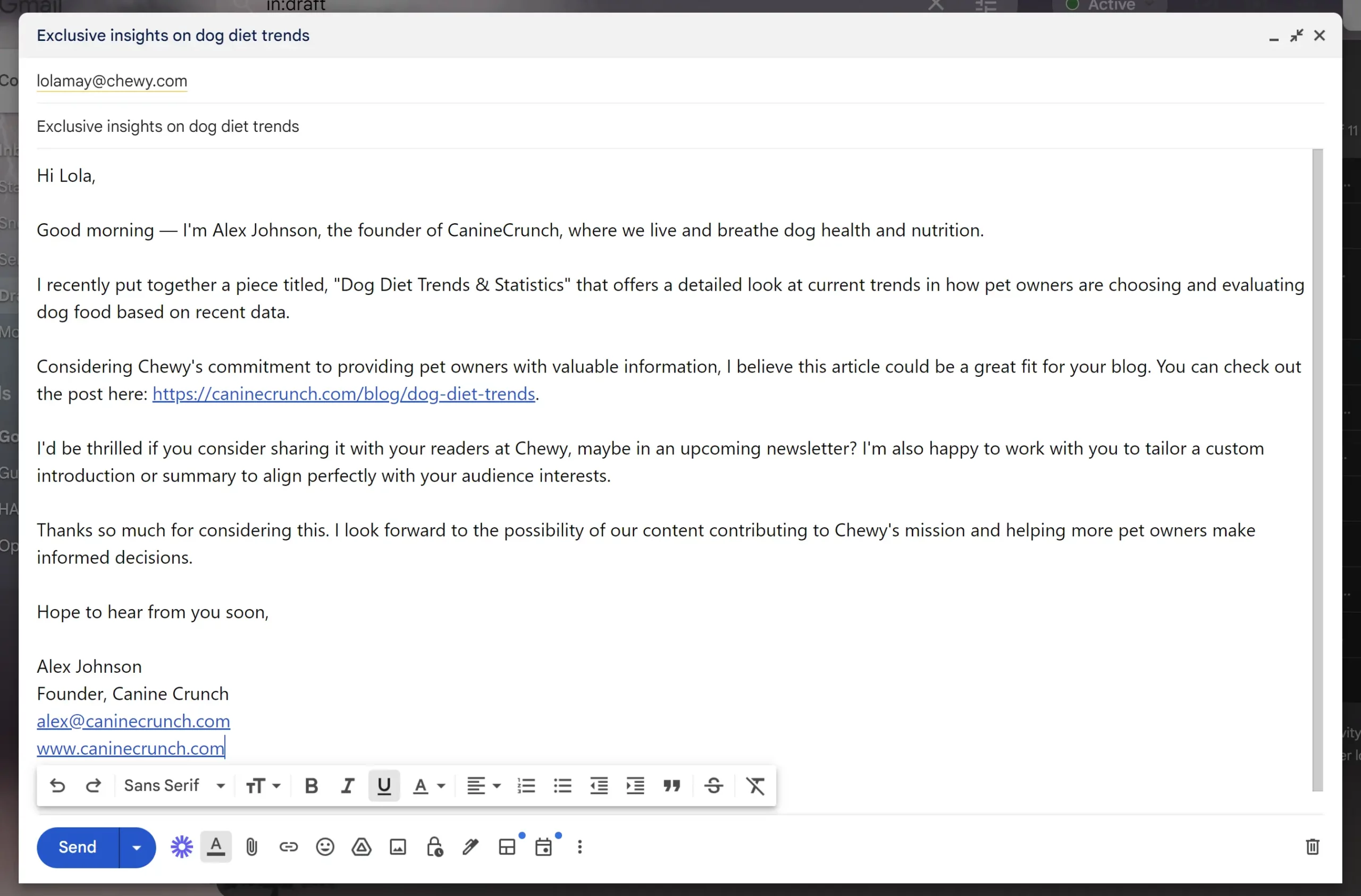
Most importantly, remember to be polite and conduct yourself professionally. Never demand that someone include a link to your site. People who manage successful websites learned not to feed internet trolls a long time ago. Instead, create a concise and friendly email message that you can send to the sites and blogs on your list and try to personalize it for each one.
6. Build Ultimate Guides And Use The Skyscraper Method
We’ve touched on this already, but one of the best ways to build links naturally is by creating awesome, useful, relevant content that people naturally want to link to. One of the most effective ways to do that is by creating comprehensive, in-depth resources known as ultimate guides.
These guides should cover a topic relevant to your niche as thoroughly as possible, providing valuable insights, tips, and information that are not readily available elsewhere. The goal is to make your guide the go-to resource for its topic, making others in your industry and related fields want to link to it as a reference.
One popular (and super effective) way to create ultimate guides as a link-building strategy is called the Skyscraper Method. This method, coined by SEO expert Brian Dean, involves three key steps:
- Research and identify the best, most popular content on a topic: Look for existing content within your niche that has attracted a significant amount of backlinks and social shares. Tools like Ahrefs or Semrush can help you identify these pieces of content.
- Then, create something better: Take the topic of the popular content and create something even more valuable. Your ultimate guide should be more comprehensive, up-to-date, and useful. This could mean adding more depth, updating statistics, including infographics and videos, or covering additional related subtopics not addressed in the original content.
- Reach out and promote your content: Once your ultimate guide is published, reach out to websites that link to the original piece of popular content. Let them know about your guide, explaining how it’s more comprehensive and valuable for their readers. Don’t forget to also promote your guide through your own channels, such as social media, email newsletters, and your website.
Comprehensive guides and the Skyscraper Method require a significant investment of time and resources, but the payoff can be huge. Not only do they attract backlinks, but they also establish your brand as an authority in your field. This can lead to increased organic traffic, more engagement, and even opportunities for collaboration and partnerships.
When crafting a detailed guide, keep these best practices in mind to maximize its impact:
- Choose evergreen topics that will stay relevant and useful over time. That way, your guide continues to attract backlinks and readers long after it’s published.
- Use images, charts, infographics, and videos to make your guide more engaging and shareable.
- Keep your ultimate guides up-to-date with the latest information and trends. This not only helps maintain its value over time but also provides opportunities to reach out to new potential link sources.
7. Create Listicles
Listicles — articles formatted as lists — can be an effective way to attract backlinks thanks to their highly shareable and digestible format. People love reading lists because they offer information that’s structured and easy to consume. Plus, they can easily share them with friends! What’s not to like?
When you create listicles that compile valuable resources, tips, or recommendations relevant to your niche, you provide useful information to your audience and increase the likelihood of earning backlinks from other websites looking to provide their readers with helpful resources.
Your listicle should cover topics that are engaging and relevant to your target audience. Look for subjects that have a broad appeal and can be easily segmented into list form. This could range from “Top 10 Tools for Remote Work” to “5 Must-Read Books for Aspiring Entrepreneurs.” Adding quotes or insights from industry leaders can also make your listicle more shareable. And don’t forget to incorporate relevant keywords throughout your listicle to improve its visibility in the SEO rankings and bring organic traffic to your site.
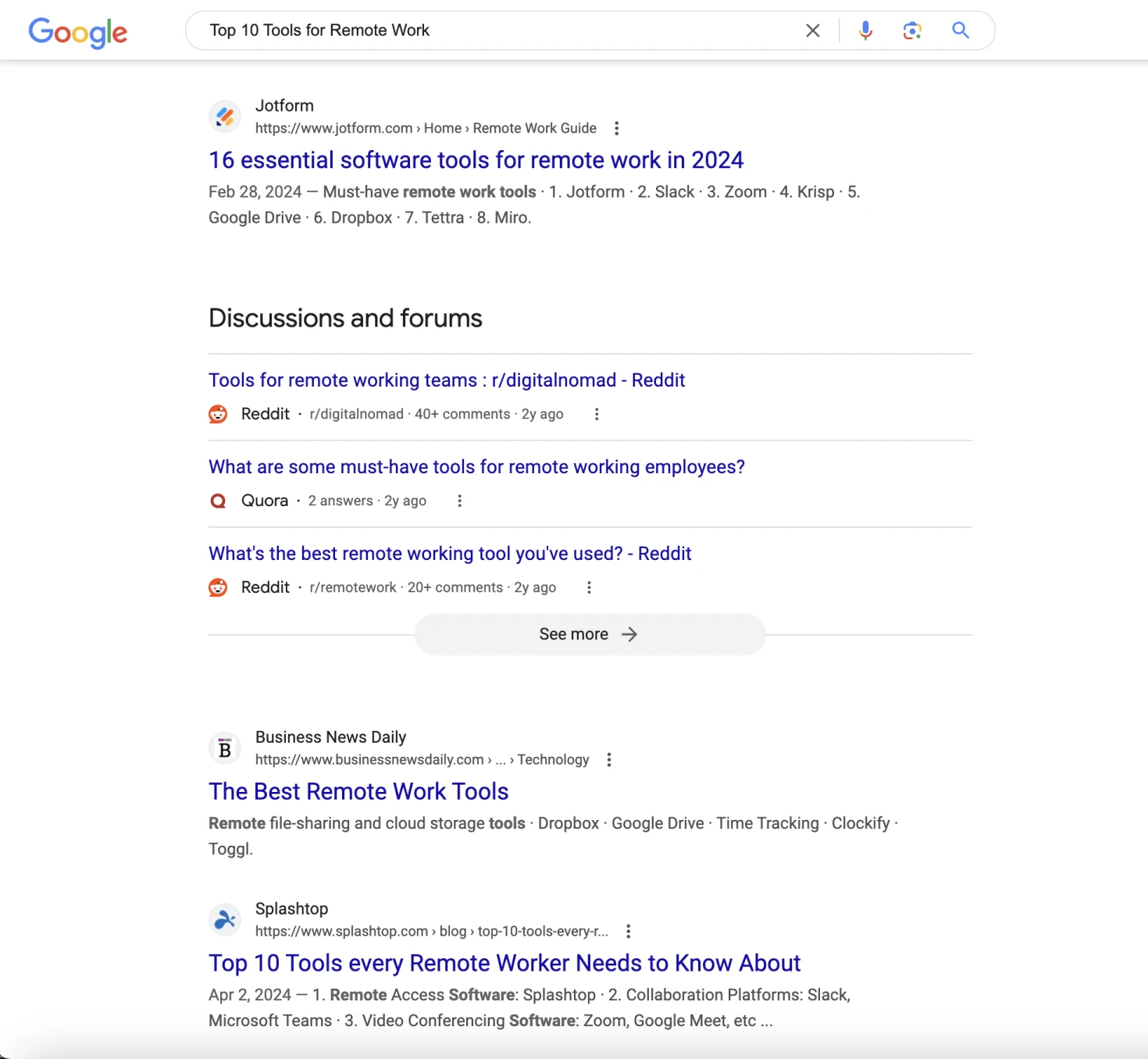
8. Look For Media Coverage Or PR
Securing media coverage or participating in public relations (PR) activities can significantly boost your link-building efforts. When reputable news outlets, industry publications, or influential blogs mention and link to your website, it not only drives direct traffic, but also increases your site’s authority and SEO ranking.
To attract the attention of journalists and editors, you need to offer something genuinely newsworthy. This could be original research, a groundbreaking product launch, a significant company milestone, or an expert opinion on current trends. Your content should provide value to their readership and stand out amidst the noise.
When you have something newsworthy to share, a well-crafted press release can be your ticket to gaining media attention. You can also engage with journalists and media professionals on social media, especially platforms like X or LinkedIn.
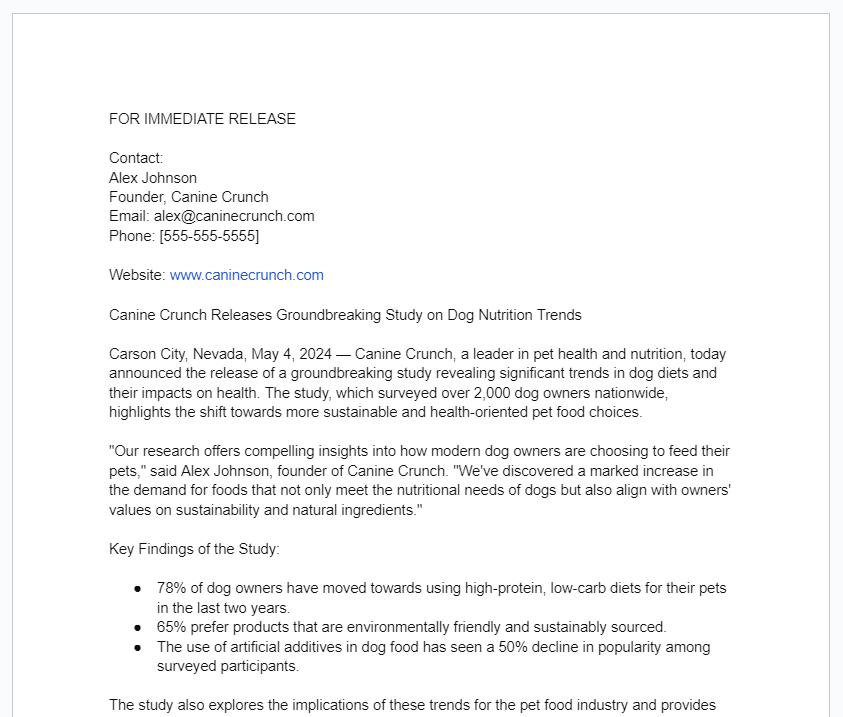
Another way to gain media coverage is by positioning yourself as an expert in your field who can provide valuable insights into current news or industry trends. Journalists often look for knowledgeable individuals to quote in their articles, which can be an excellent way to secure a backlink from reputable sources.
Finally, be sure to monitor the web for unlinked mentions of your name or site–sometimes, media outlets will mention your brand without linking back to you. Tools like Google Alerts or Ahrefs can help you monitor for these mentions. When you find them, reach out to the publisher and politely ask if they can add a link back to your site.
9. Use HARO
Help a Reporter Out (HARO) is a great tool for gaining high-quality links from authoritative sites. It connects journalists with sources for upcoming stories, providing a platform for experts to share their knowledge and get featured in various media channels.
Register as a source on the HARO website and set up email alerts for topics relevant to your industry or expertise. You’ll then receive daily emails with queries from journalists looking for sources. The key is to respond quickly and accurately to requests that match your knowledge base.
If you provide comprehensive answers and are willing to share useful data, personal anecdotes, or expert analysis that can enrich the journalist’s story, you’ll be more likely to be selected and result in a backlink.
Keep in mind that timeliness is critical when responding to HARO queries. Journalists often work on tight deadlines, so sending your response as soon as possible increases your chances of being featured. Aim to respond within a few hours of receiving the query.
Most journalists will ask for a short bio to include with your contribution. This is your opportunity to secure a backlink. Write a brief, informative bio, and include a direct link to your website. Make sure the link adds value to the readers and is relevant to the context of your contribution.
Once your contribution is published, you can leverage it for further visibility. Share the article on your social media channels, include it in your email newsletter, or feature it on your website. This not only drives traffic, but also showcases your expertise in your niche.
10. Try Broken Link Building
Broken Link
A link is “broken” when it leads you to a page that doesn’t exist. When you visit a broken link, you’ll get a 404 error, which means the page is missing.
Read MoreBroken link building is a type of link building that involves finding broken backlinks (or dead links) on other websites and suggesting your own content as a replacement. This method not only helps you earn backlinks, but also helps other site owners improve their user experience — a win-win!
Here’s what to do:
- Start by identifying websites in your niche that have content that’s similar to yours. Look for blogs, resource pages, or industry news sites. The key is to focus on sites that are relevant to your audience and likely to link to your content.
- Use tools like Ahrefs, Semrush, or Check My Links (a Chrome extension) to scan the sites you identify for broken links. These types of tools can help you quickly find links that lead to 404 pages or other error messages.
- Once you find a broken link, try to evaluate the content it was originally linking to. Understanding what the missing content was about will help you propose a relevant, high-quality replacement. If you already have content that matches or can quickly create content that would serve as a good substitute, you’re already in a great position to reach out to the site owner.
- Contact the website owner or webmaster to tell them about the broken link. When reaching out, be helpful and courteous. Start by providing value, such as pointing out the broken link (and maybe even mentioning a few others if you found more than one)
- Then, suggest your content as a replacement. Be specific about why your content would make a great substitute. Focus on the value it would provide for their readers.
- If you don’t hear back within a week or two, it’s OK to send a follow-up email. However, if you still don’t receive a response after a follow-up, it’s best to move on to other opportunities.
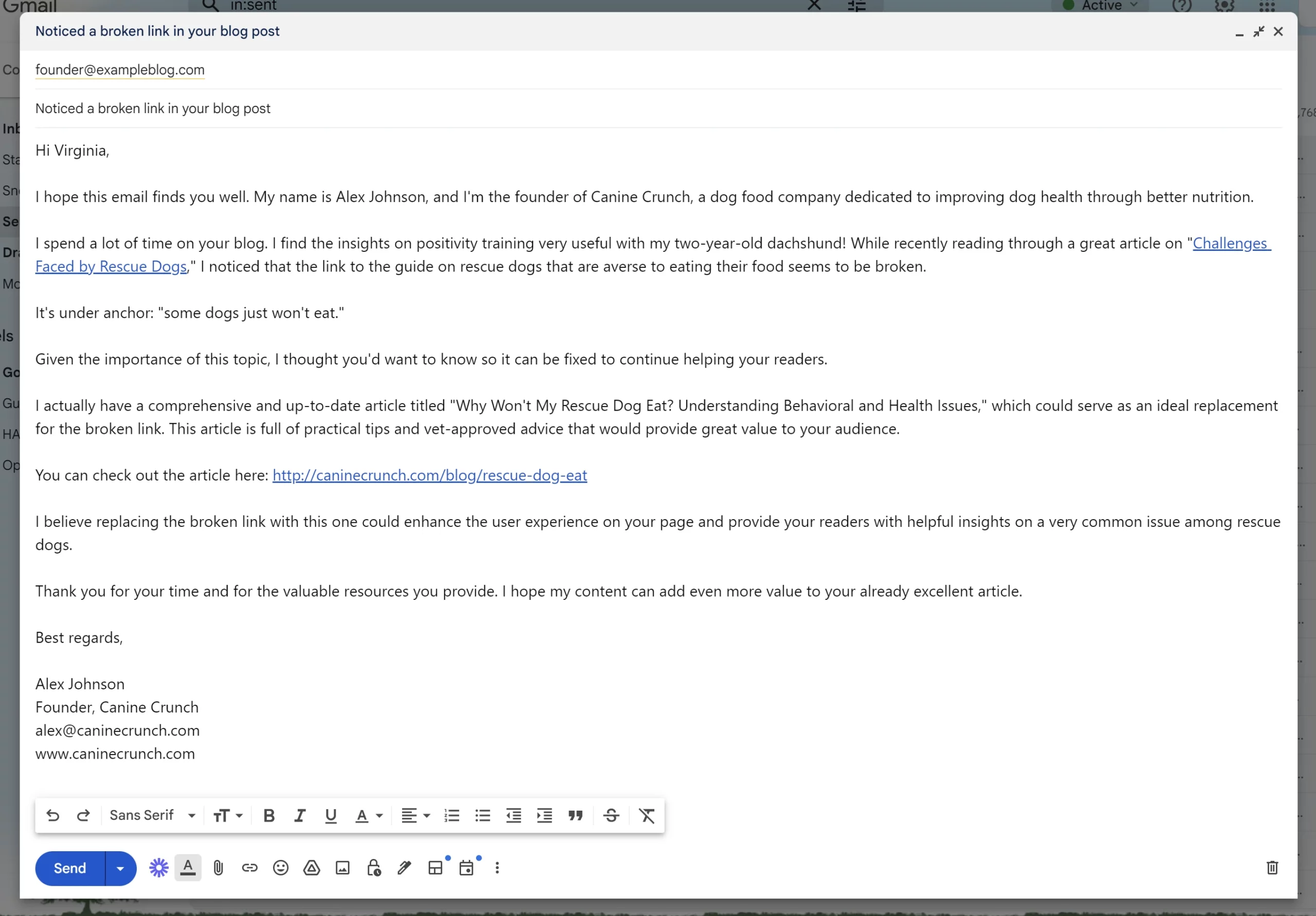
11. Build A Free Tool
Offering a free online tool can be an incredibly effective strategy for attracting backlinks. Tools that offer useful functionality or solve specific problems in your industry are likely to be shared widely and linked as valuable resources. We’ve also talked a lot about how the best way to build links is creating high-quality content, and a really useful tool is one of the most shareable types of content.
Start by identifying a gap or a specific need within your industry that can be addressed with a tool. Maybe you can simplify a complex calculation. Perhaps you can automate a tedious process. Or you can help someone visualize complex data.
Here’s the key, though: the more useful and unique the tool, the more likely it is to attract attention and backlinks.
Depending on your expertise and resources, you might develop the tool in-house or hire developers. Just make sure that your tool is user-friendly, visually appealing, and most importantly, functional. It should perform its intended task well to encourage users to share and link to it.
Once the tool is ready to launch, create a dedicated landing page for it. Include comprehensive instructions, the benefits of using the tool, and examples of its output.
Optimize the page for SEO with relevant keywords to increase its visibility in search engine results. Then, share the tool through all available channels: social media, newsletters, blogs, and industry forums. Maybe even reach out to influencers and thought leaders in your industry who might benefit from your tool. You can also submit the tool to directories and listings that curate free resources. Spread the word far and wide.
Building a free tool requires an upfront investment, but the potential SEO benefits and the ability to attract a significant number of high-quality backlinks can offer a great return.
12. Get Involved In Guest Blogging
Guest Blogging
Guest blogging, also known as guest posting, is the act of writing and publishing articles on other people’s websites. Guest bloggers usually write for free in exchange for exposure to a new audience.
Read MoreGuest blogging can be one of the most powerful tools in your link-building strategy. Also called “guest posting,” it involves writing a brand new post to be featured on another website. This post can then contain one or more links back to your site and content.
You can often get farther with guest blogging than with simple link requests. After all, you’ll be providing content to another website for free. In return, they’ll link back to your site. This is a very attractive proposition for blogs, in particular, since they’re always in need of fresh content.
Just like with outreach, guest blogging is most effective if you follow some simple best practices. These include:
- Avoiding sites that want you to pay them to publish your guest post: Most blogs will accept this kind of content for free, so there’s no need to pay for placement unless you’re desperate to be featured on a specific high-profile blog.
- Checking the blog to see if they have guidelines for guest bloggers: Many will have a dedicated “write for us” page that outlines their requirements, what they will and won’t accept, and so on. By carefully following these guidelines, you’ll increase your chances of getting past a busy blogger’s spam filter.
- Doing your research: Find out what the blog’s style is like and what kinds of topics they cover. This will help you come up with a topic idea that they’re more likely to accept.
- Reaching out with a proposal first: Don’t simply write up a full post and submit it! These are often rejected and can waste a lot of your time. Instead, reach out to the blog and let them know what topic you’d like to cover, what key points you’ll include, and what link(s) you’re hoping to see.
- Creating quality, unique content: Never copy content from your own site or elsewhere (plagiarism is always a big no-no). Instead, take the time to put together a unique, polished post for each blog. Also, avoid getting too “sales-y” about your own website or products and focus on providing real value to the blog’s audience.
This is the most time-intensive of our link building strategies. Still, it can pay off in increased visibility, improved authority, and links that are perfectly placed to capture your audience’s attention. Plus, you might develop collaborative relationships with some of these blogs, providing further opportunities for interlinking in the future.
Measuring Your Link Building Efforts
Trying to keep tabs on your backlinks manually can be very difficult. It’s best to use a backlinks analytics tool instead. Many solutions can tell you everything you need to know about your backlinks, quickly and with minimal fuss.
If you have a favorite analytics tool already, chances are it can help you out in this area. If not, a perfect place to start is with Google Analytics. This tool is free, accessible to beginners, and full of useful metrics and features. Google Analytics is an especially great place to monitor the amount of traffic that each backlink drives to your site. High amounts of referral traffic from backlinks are a good sign that your link building strategy is boosting your SEO.
Other good backlink analysis tools include Ahrefs, Semrush, and Moz. These tools can help you keep tabs on the total number of backlinks your site has built up, as well as the source of backlinks and the rate at which you’re acquiring new links. Watching these numbers can help you determine whether your link building strategies are effective, and test certain strategies against one another.
Pass The Link Juice
If you want to improve your website’s traffic and attract more of your target audience, link building is necessary. A complete link building strategy helps you encourage relevant sites to share your content with their audiences. It’s a method that takes a little time to master but is cheap, cost-effective, and highly trackable.
Of course, bringing traffic to your website is just the start. You also want those new visitors to have an excellent experience — which starts with high-quality web hosting. Fortunately, our shared website hosting can do the trick!
Sign up today to see what a world-famous website hosting plan can do for you.

Get More Visitors, Grow Your Business
Our marketing experts will help you earn more traffic and convert more website visitors so you can focus on running your business.
Learn More
